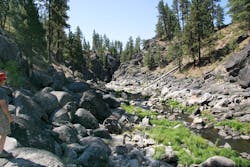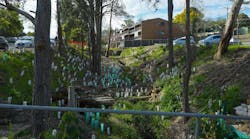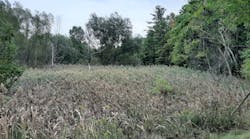Report Reveals Potential Growing Gap in Upper Rio Grande Water Supply, Demand
Increasing temperatures and changes in the timing of snowmelt runoff could impact the amount of water available on the upper Rio Grande in the future. These are some of the results of the Upper Rio Grande Impact Assessment released by Department of the Interior Assistant Secretary for Water and Science Anne Castle.
The study was conducted by the Bureau of Reclamation in partnership with Sandia National Laboratories and the U.S. Army Corps of Engineers. It includes a detailed evaluation of the climate, hydrology and water operations of the upper Rio Grande basin of Colorado and New Mexico. Also included is an evaluation of the potential impacts associated with climate change on streamflow, water demand and water operations in the basin.
Temperatures will increase 4 to 6°F by the end of the 21st century, according to the climate modeling used in the study. Although the modeling projects that total annual average precipitation in the basin will not change considerably, there is likely to be a decreasing snowpack, an earlier and smaller spring snowmelt runoff and an increase in the frequency, intensity and duration of both droughts and floods.
The models used for the study consistently project an overall decrease in water availability in the basin. Rio Grande supplies are projected to decrease by an average of one-third from current supplies. The water supply from the San Juan-Chama Project, which is imported to the Rio Grande, is projected to decrease by an average of one-quarter.
All of these impacts would contribute to a larger gap between water supply and demand and lead to future water management challenges for the Bureau of Reclamation and other water managers within the upper Rio Grande basin.
The URGIA is the first impact assessment to be completed by Reclamation as part of the Westwide Climate Risk Assessments through the Department of the Interior's WaterSMART Program. Impact assessments are reconnaissance-level investigations of the potential hydrologic impacts of climate change in the major river basins of the Western United States. Through WaterSMART, Reclamation is also able to conduct a more in-depth basin study in conjunction with state and local partners that would develop options and strategies to address supply and demand imbalances.
The WaterSMART Program focuses on improving water conservation, sustainability and helping water resource managers make sound decisions about water use. It identifies strategies to ensure that this and future generations will have sufficient supplies of clean water for drinking, economic activities, recreation and ecosystem health. The program also identifies adaptive measures to address climate change and its impact on future water supply and demand.
Source: Bureau of Reclamation


